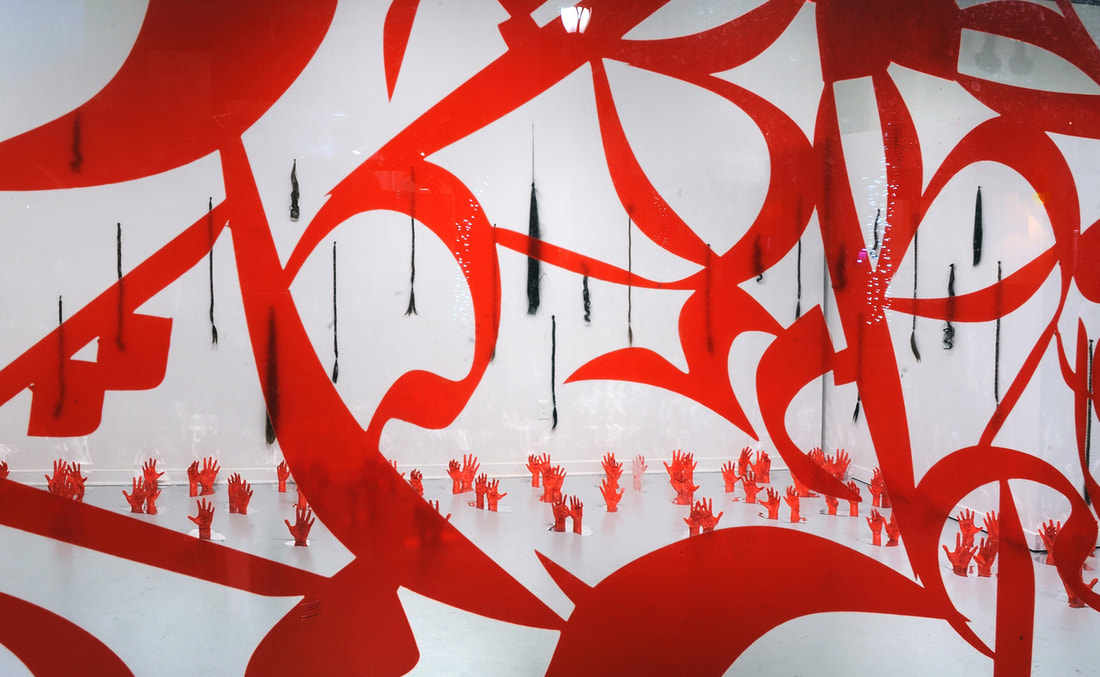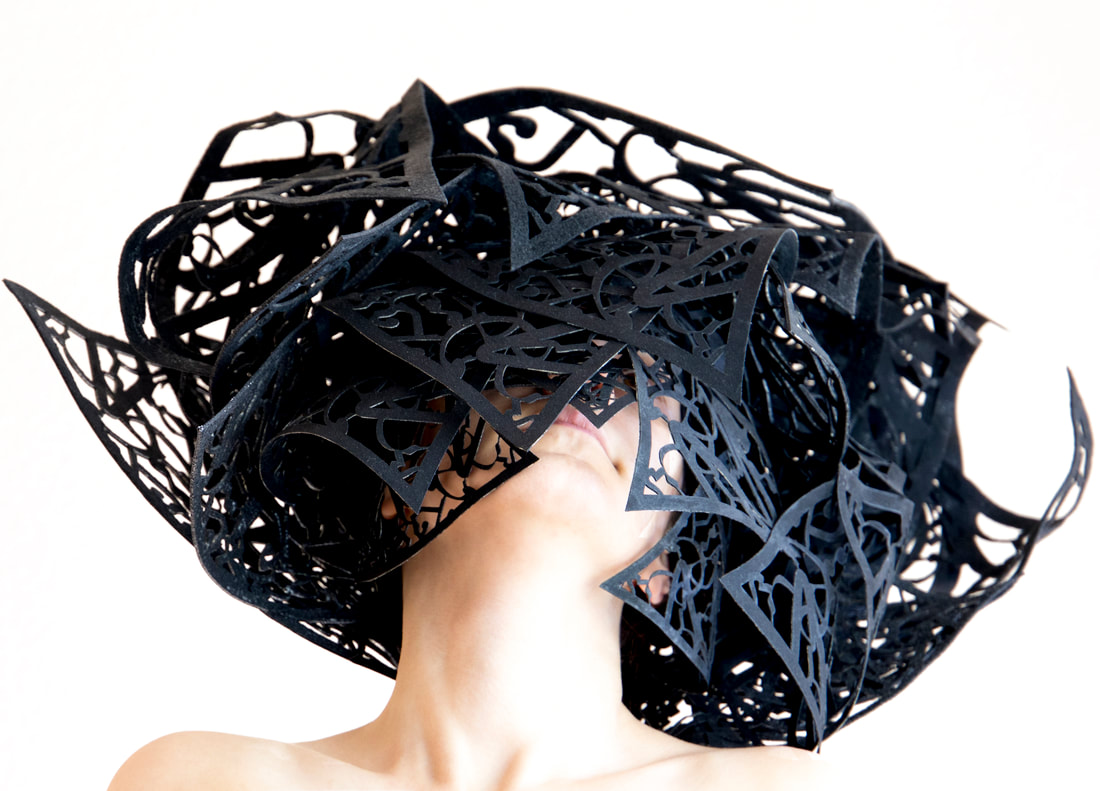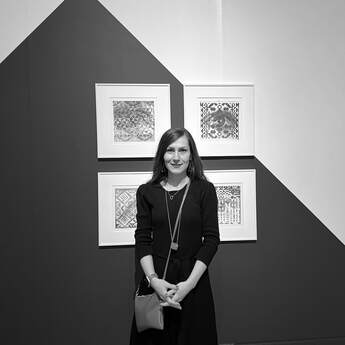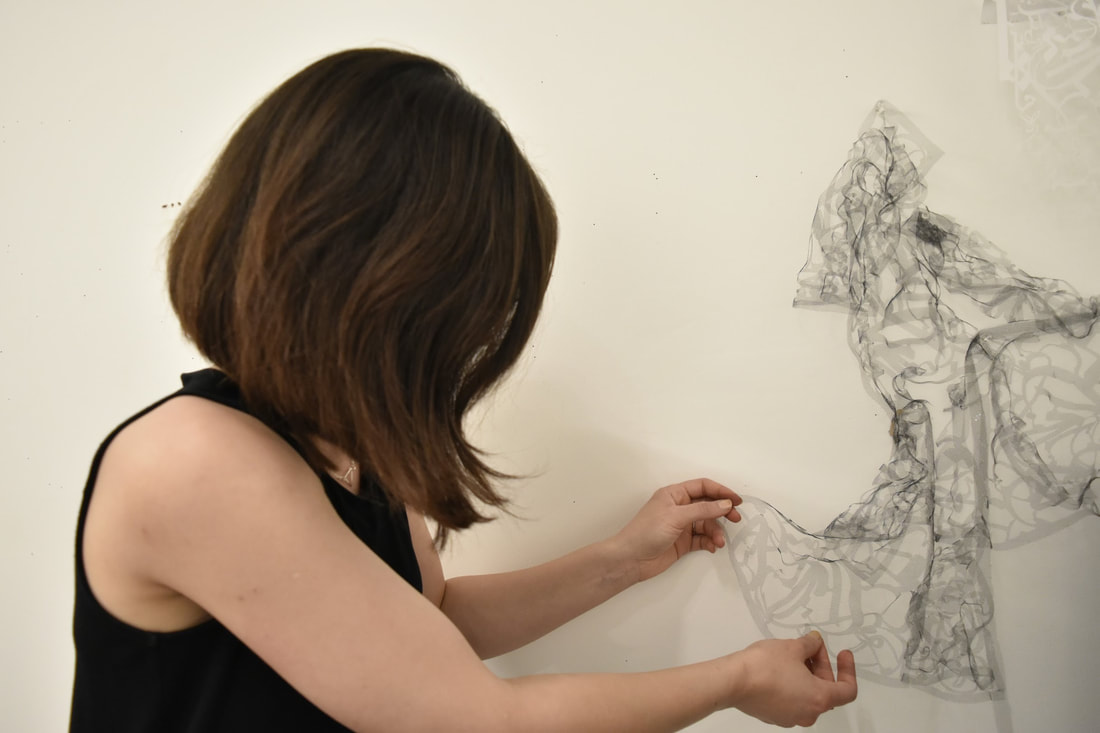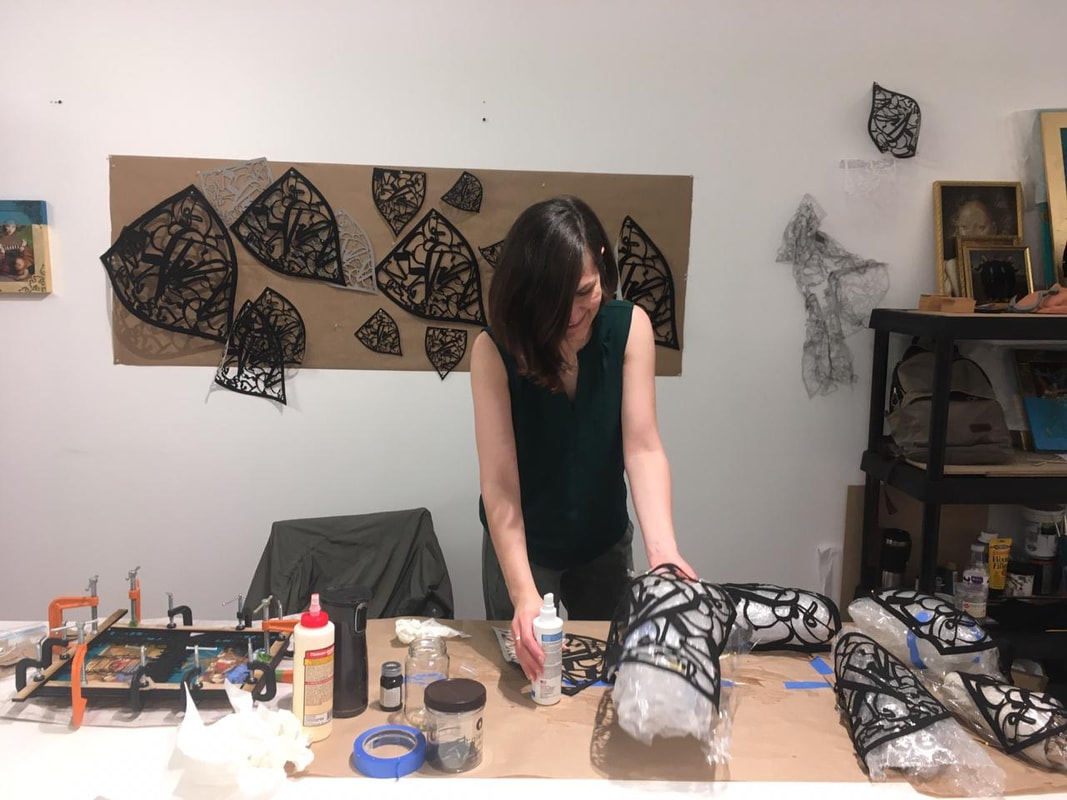Kiana Honarmand is an artist born and raised in Iran. Her work addresses issues related to her cultural identity, violation of women's rights in Iran, censorship, surveillance, and the Western perception of the Middle East. Derived from her interest in different materials and processes, Kiana’s interdisciplinary practice features the use of digital fabrication tools as well as traditional methods of craft. In 2012, Kiana moved to the United States to pursue and complete her Master of Fine Arts degree. She currently lives and works in the Bay Area. Her work has been exhibited in solo and group exhibitions throughout the United States and Internationally.
Published on May 6th, 2021. Artist responses collected in months previous.
What hurdles have you overcome this year and how have they affected your art practice?
2020 has been a particularly challenging year with the global pandemic and the terrible events that have happened during the past several months. I haven't been able to go to my studio in more than six months and the makerspace which I am a member of has been closed since last March. On top of that, so many exhibitions and opportunities have been canceled due to the shelter-in-place order. The uncertainty about when things will be back to normal makes it challenging to plan for the future. I also use different digital fabrication tools such as laser cutters in my work, and not knowing when I will be able to use those facilities again, has been very difficult. The biggest hurdle for me was figuring out how to adjust to this new "normal" and how to make new work with limited materials and tools that still represents me and my ideas as an artist.
How has your art practice been affected by the pandemic?
I am an interdisciplinary artist and my work utilizes different materials and processes. I was in the middle of a new body of work right before the pandemic started. I was in that sweet stage where I had mostly figured out the details of the series. I had finally found a process suitable for my project and I was designing different pieces to cut with the laser cutter. When the quarantine started, I had to completely leave those pieces aside as I lost access to my makerspace and studio. One of most difficult things for me was figuring out how to modify my studio practice so I can continue making work from home with the materials and tools that I had on hand. I realized that sadly I won't be able to continue my past work for the time being and I hope that I will be in the right headspace to resume those after the pandemic is over. I am currently working on a video series as well as a mixed media photography series.
What support systems have you put in place to help keep your practice thriving amidst these unforeseeable circumstances?
This year has been a very challenging year for artists, with many people losing their jobs and most opportunities for exhibitions. Keeping in touch with other artists in my community has been extremely helpful in dealing with the situation and not losing hope. I have been fortunate enough to be a part of a great community of artists through my studio at Root Division in San Francisco. We have monthly Zoom meetings and it has been great to stay connected virtually. I believe as artists we need to continue the conversation around art and be a part of a community that gets and gives feedback. My colleague Farima Fooladi and I have started a critique group called “Crit Society” where we conduct virtual studio visits with artists from all over the country. We have built a strong community where we have a thoughtful conversation about art and provide feedback to one another. It has been a wholesome and precious experience in these uncertain times. Keeping the conversation about art alive has also been very inspiring in our own studio practice.
What methods do you employ to stay resilient in your art practice? What tips would you recommend to other artists who find staying resilient difficult?
The pandemic has affected people in many different ways. Some of us have a much easier time dealing with the situation, while it is causing a lot of anxiety for others. For me there has been up and down days. I believe that overall it has been helpful to plan for long-term and look at the big picture. Focusing on the near future can be disheartening as there are many uncertainties in the next few months and even through next year. At the beginning, it was very challenging to deal with all the limitations that came with the pandemic. Now I try to look at it as a disruption that will take 1-2 years of my long-term studio practice. For the practical side of things I am finding it very helpful to make to-do lists, one for longer term projects and one at the beginning of each day with detailed notes about each task I need to complete. It has helped me keep track of my time and stay focused.
What have you learned about yourself as an artist this year?
As an artist who deals with issues related to identity, I am learning that I need to keep digging deeper, do more research, read more books and continue to get to know myself and the world around me more and more. I am learning to take care of myself better, let myself take breaks, and be okay with not being completely fine during difficult times. I am also learning that I can be more flexible than I thought I was capable of. I am learning how to adapt to more challenging situations, both as a person and as an artist. I am constantly learning to try new processes to be able to continue making my work. I am learning to challenge myself every day, accept failure and not be afraid of trying over and over again. Life is a journey, and I am learning to deal with its ups and downs.
What hurdles have you overcome this year and how have they affected your art practice?
2020 has been a particularly challenging year with the global pandemic and the terrible events that have happened during the past several months. I haven't been able to go to my studio in more than six months and the makerspace which I am a member of has been closed since last March. On top of that, so many exhibitions and opportunities have been canceled due to the shelter-in-place order. The uncertainty about when things will be back to normal makes it challenging to plan for the future. I also use different digital fabrication tools such as laser cutters in my work, and not knowing when I will be able to use those facilities again, has been very difficult. The biggest hurdle for me was figuring out how to adjust to this new "normal" and how to make new work with limited materials and tools that still represents me and my ideas as an artist.
How has your art practice been affected by the pandemic?
I am an interdisciplinary artist and my work utilizes different materials and processes. I was in the middle of a new body of work right before the pandemic started. I was in that sweet stage where I had mostly figured out the details of the series. I had finally found a process suitable for my project and I was designing different pieces to cut with the laser cutter. When the quarantine started, I had to completely leave those pieces aside as I lost access to my makerspace and studio. One of most difficult things for me was figuring out how to modify my studio practice so I can continue making work from home with the materials and tools that I had on hand. I realized that sadly I won't be able to continue my past work for the time being and I hope that I will be in the right headspace to resume those after the pandemic is over. I am currently working on a video series as well as a mixed media photography series.
What support systems have you put in place to help keep your practice thriving amidst these unforeseeable circumstances?
This year has been a very challenging year for artists, with many people losing their jobs and most opportunities for exhibitions. Keeping in touch with other artists in my community has been extremely helpful in dealing with the situation and not losing hope. I have been fortunate enough to be a part of a great community of artists through my studio at Root Division in San Francisco. We have monthly Zoom meetings and it has been great to stay connected virtually. I believe as artists we need to continue the conversation around art and be a part of a community that gets and gives feedback. My colleague Farima Fooladi and I have started a critique group called “Crit Society” where we conduct virtual studio visits with artists from all over the country. We have built a strong community where we have a thoughtful conversation about art and provide feedback to one another. It has been a wholesome and precious experience in these uncertain times. Keeping the conversation about art alive has also been very inspiring in our own studio practice.
What methods do you employ to stay resilient in your art practice? What tips would you recommend to other artists who find staying resilient difficult?
The pandemic has affected people in many different ways. Some of us have a much easier time dealing with the situation, while it is causing a lot of anxiety for others. For me there has been up and down days. I believe that overall it has been helpful to plan for long-term and look at the big picture. Focusing on the near future can be disheartening as there are many uncertainties in the next few months and even through next year. At the beginning, it was very challenging to deal with all the limitations that came with the pandemic. Now I try to look at it as a disruption that will take 1-2 years of my long-term studio practice. For the practical side of things I am finding it very helpful to make to-do lists, one for longer term projects and one at the beginning of each day with detailed notes about each task I need to complete. It has helped me keep track of my time and stay focused.
What have you learned about yourself as an artist this year?
As an artist who deals with issues related to identity, I am learning that I need to keep digging deeper, do more research, read more books and continue to get to know myself and the world around me more and more. I am learning to take care of myself better, let myself take breaks, and be okay with not being completely fine during difficult times. I am also learning that I can be more flexible than I thought I was capable of. I am learning how to adapt to more challenging situations, both as a person and as an artist. I am constantly learning to try new processes to be able to continue making my work. I am learning to challenge myself every day, accept failure and not be afraid of trying over and over again. Life is a journey, and I am learning to deal with its ups and downs.
Find Kiana Honarmand on Instagram
